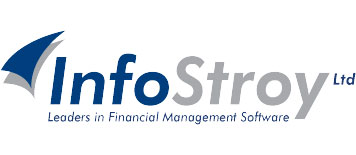GAMA Technical Requirements
System requirements for working with GAMA
Depending on the number of users and the amount and the complexity of tasks to be solved, there may be configurations using a Terminal server. In this case, GAMA instances operate on the server while the workstations play the role of terminals and do not have special requirements.
In the minimum configuration, the server operates as a database server only and GAMA operates on workstations which are then subject to requirements.
Evaluation of hardware resources for GAMA operation
The resources required for GAMA operation are conveniently split into two components: database files and CPU resources of workstations.
Database files
One user of the system (including GAMA Agent) requires the following load on the data storage during active operation
- Approximately 40 IOPS
- Data flow about 10 Mbps
If you are hosting a database on a file server, you should take into account the CPU utilization of the server. Because of the large the number of data access operations, the file server queues may not be running fast enough and may become a bottleneck.
Keep in mind that updating the file access time is an I/O operation and it can significantly degrade the performance of a typical GAMA database. Disabling the file server option can noticeably improve performance.
CPU resources of workstations
Each GAMA user has to be supplied by at least one processor core of the Intel i5 2+ GHz class. GAMA actively uses a multicore workstation processor (physical, terminal, and virtual), and additional free cores can significantly Improve the response time.
You should provide at least 4GB of RAM to the workstation of each user of the system. Many operations can significantly benefit from additional RAM.
All these considerations are suitable for preliminary assessment of the necessary hardware resources to install the system in any of the following deployment scenarios.
File Storage Options:
- Physical/Virtual server-available on LAN
- Logically placed in the workplace (physical, terminal, virtual, virtual-terminal)
In any case, the IOPS load and data streams of different users are aggregated statistically (i.e. taking into account time spread of operations). In the first case, the LAN stream channel is likely to be thinner than the local storage I/O bus.
In the second case, the statistical total load of both the workstations and the database falls on the same server hardware. You should keep in mind that at the time of high load on database the same workstation intensively uses the processing power of the same processor for data processing. If this resource is insufficient, the performance of the multiuser environment may be unsatisfactory.
Placement of workplaces options:
- Physical
- Virtual
- Terminal
Resource demand for placing workstations on a single physical host are similar in both consolidating scenarios—the requirements are statistically aggregated.
Here is an example of an evaluation. Suppose you want to put GAMA together for 5 employees.
- The requirement to store the system database files. 40 IOPS x 5. = 200 IOPS. Based on the normal performance of industrial hard drives of 80-100 IOPS on the spindle, we have a requirement of 2-3 HDD array. This ensures that there is no bottleneck on the IOPS. If you are sharing an array with another load, you should consider the possibility of an interference of loads and make an adjustment.
- The requirement for bandwidth 10mbit/s x 5 = 50mbit/s = 5 MB/s. This satisfies most corporate arrays of entry level.
- When selecting a workstation access to the DB via LAN (shared file server), it is necessary to provide a reserve of bandwidth of LAN 50 Mbit x about 1.5-2 = 75-100 Mbps (take into account the overhead expenses of access protocols). Therefore, 100 Mbps LAN is too slow and it is recommended to choose 1 Gbit LAN that will be more effective/efficient/faster. The file server may require some fine-tuning (see above) and should not be considered as a secondary component of the system.
Workplaces
- Physical – Minimum i5 2-Core from 2GHz, memory starting at 4GB, 64-bit OS, 1gbit NIC
- Virtual – requirements are similar to physical, memory can be made dynamically shared, bandwidth of virtual NIC starting at 100 Mbps
- Terminal – server memory 4GB x 5 = 20 Gb, but you can try to start with 70% of the memory. 5. x 1 CPU core + 1 = 6 cores, but you can start with 4.
Additional software Requirements
The Microsoft.NET Framework versions 4.7.2 or higher have to be installed on each workstation. Each workstation must have Microsoft Visual C++ 2022 Redistributable (x64).
The maxws parameter in the HKEY_CURRENT_USER\Software\INFOSTROY\GAMA section of the MS Windows registry should be set to 512000 or above.
To generate reports and documents, GAMA can use the tools of the MS Office 2013/2016 package.



